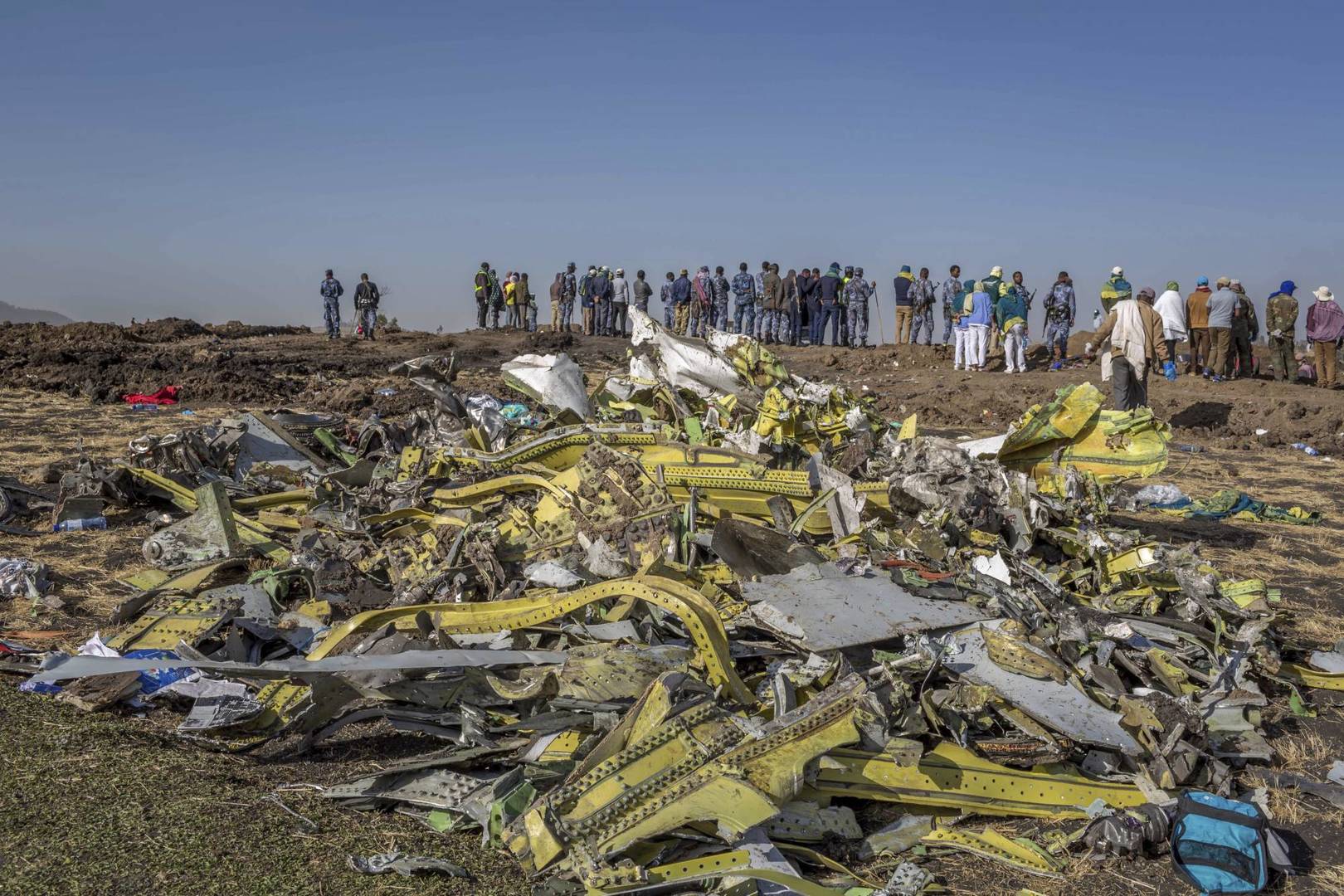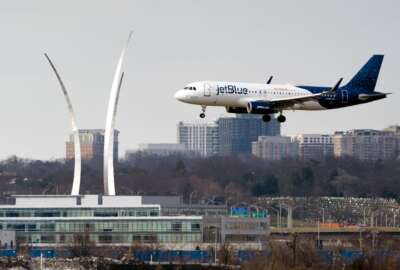
After Boeing 737 Max crashes, GAO looked at European standards for plane certifications
When two Federal Aviation Administration-certified Boeing 737 Max jets crashed a few years back, it raised questions about the FAA certification process for new...
Best listening experience is on Chrome, Firefox or Safari. Subscribe to Federal Drive’s daily audio interviews on Apple Podcasts or PodcastOne.
When two Federal Aviation Administration-certified Boeing 737 Max jets crashed a few years back, it raised questions about the FAA certification process for new airplane designs. Members of Congress wanted to know if there was anything the U.S. could learn from the European Union’s procedures. The Government Accountability Office compared the two. And for what it found Federal News Network’s Eric White spoke with GAO’s Director of Physical Infrastructure Issues Heather Krause on the Federal Drive with Tom Temin.
Interview transcript:
Heather Krause: What we found in looking at the two systems is that the activities and standards that the two countries carry out, or the two systems carry out for certifying new designs of airplanes are largely similar. A lot of that really does stem from U.S. European Union or EU bilateral agreement that was developed back in 2008, which helped to harmonize those two processes, recognizing that aviation and manufacturing of aircraft is sort of a global system. And so they had developed a bilateral agreement to help streamline the two entities to be able to verify each other’s safety certification of new aircraft design. So we found a lot of similarities in terms of their activities and approaches. We looked at how their approaches to working with manufacturers, as they’re going about designing new aircraft or certifying the design of new aircraft. You know, we did find that they both heavily rely on manufacturers to support the design certification process, but the way they go about their kind of their approaches to involving them and reviewing the manufacturers’ work differ. So again, you know, they’re both relying and sort of looking at and approving, you know, staff within these companies and these manufacturers to be able to carry out certification activities on behalf of these aviation authorities. But where we saw some differences were and in, you know, they both look at the entire package that these manufacturers are putting forward when it comes to getting approval for airplane design. But the level of review differs. So you have FAA, who’s looking at the completeness of the overall package, and through the determination. So how the companies are showing that they comply with safety and other standards in high risk areas. But, you know, FAA doesn’t typically look at and conduct independent reviews of the technical basis for some of those compliance activities that the manufacturers are putting together. In contrast, what we found in the European system is that they use a risk based approach for looking at more specific aspects of the certification prep package for manufacturers. And they’re also, you know, evaluating some of the technical basis for those compliance findings that they’re presenting to the aviation authority for approval.
Eric White: And so I mean, I’m not gonna ask you to speculate here on, you know, what could have happened and everything like that, but I mean, both agencies did approve the 737 Max, and, you know, the EASA may have been a little bit faster on grounding it. But other than that, I mean, any of the differences were moot in the case of the 737, I imagine, or would the ESA comprehensiveness, if the FAA had shown that would maybe, you know, some other problems been caught a little bit earlier? Maybe? And once again, you can tell me if you if you can’t answer that question.
Heather Krause: Yeah. I mean, we didn’t get into that, obviously, you know, there’s been a lot of different investigations, and looks at FAA’s process, including a number of recommendations to FAA and how it can improve its process based on what happened with a certification of the Max. And so, you know, that’s something that the agency continues to work through, and it’ll be important for them to follow through on making those improvements to the system.
Eric White: And I’m curious if you heard about any of the differences between the two agencies when speaking to the companies and what were you told about in their dealings with the EASA and FAA?
Heather Krause: Yeah, they, you know, we, as you said, we met, spoke with both of them. And they were helpful in offering some additional context on how the process is applied in the two systems. And so, you know, as we were able to make this assessment and this comparative analysis, their perspectives were important and us understanding how the different like, what were the differences between the two systems based on their experiences within each one? With the conversations that we had with Boeing, we’re really focused on understanding how they work through the FAA process and our conversations with Airbus were understanding how they interact with the European Safety Authority.
Eric White: So where do you see these recommendations going? Obviously, this was requested by Congress. But will the FAA be taking these into consideration in those review processes that you were talking about earlier?
Heather Krause: Yeah, as we understand, and, you know, our report offers some more insight on some of the specifics and the different reviews that have been conducted, related to FAA and recommendations made to them on how to improve their certification process. You know, they’re in some of the initial stages of assessing those changes and improvements. And, you know, things like expanding the use of technical advisory boards within the certification process, and also looking at, you know, how they, how manufacturers ensure that employees involved in the certification determinations are, you know, free from undue influence. And so those types of things, FAA is taking some steps to address but it will take, it will take some time for them to work through those.
Eric White: Yeah, speaking of taking time, I imagine that this will mean a longer regulatory process for getting a new aircraft approved, probably rightfully so after what we saw, but what changes do you think we can expect to that process going forward?
Heather Krause: You know, there, there are a number of changes that FAA is starting to work through. They’re looking at how they use technical advisory boards, in terms of looking at the information that companies are presenting, related to certification of their airplane design. You know, they’re also looking at various recommendations to help update some internal guidance in terms of how they make certain decisions in the certification process. You know, again, looking at how manufacturers are ensuring that the folks involved in the certification on behalf of FAA are not influenced or have no undue influence on through the decisions and things that they’re the processes that they’re involved in.
Eric White: Yeah, and I’m curious, just as a last question, here, I mean, on the technicality that is needed in, you know, this unique industry, this is kind of a unique regulatory role that the FAA plays where the manufacturer kind of has to do its own regulation, and then the FAA decides whether or not that is doing that self-regulation well enough. I just was wondering if you could speak to that aspect of things, and how that can kind of make things a little bit different than other industries that the government regulates?
Heather Krause: Yeah. You know, in the case of looking at and certifying the design of new aircraft. They, like I said, they do rely heavily on manufacturers, you know, much, much of when in talking to folks and understand and understanding that process, say, the thinking behind that is that they’re leveraging private sector resources, you know, to improve efficiency in the process and sort of lessen the time and government resources needed to carry out, carry out the certification process. FAA has acknowledged that it doesn’t have all the resources it would need to do, to carry out the processes, and that’s where they’re, you know, relying on the manufacturers expertise and involvement to help carry out the certification of new aircraft designs.
Eric White: And after, but, go ahead. Yeah,
Heather Krause: I was, you know, just to add, you know, both FAA and the European Union Safety, Aviation Authority, you know, both of them are assessing whether manufacturers are qualified to take part in the process. So we did find some similarities there. And once they’re approved, you know, those manufacturers are creating these internal groups where the aviation authorities, FAA in and in the system over in Europe, you know, authorized those authorities to conduct sort of certification activities on their behalf.
Copyright © 2025 Federal News Network. All rights reserved. This website is not intended for users located within the European Economic Area.
Tom Temin is host of the Federal Drive and has been providing insight on federal technology and management issues for more than 30 years.
Follow @tteminWFED
Related Stories




